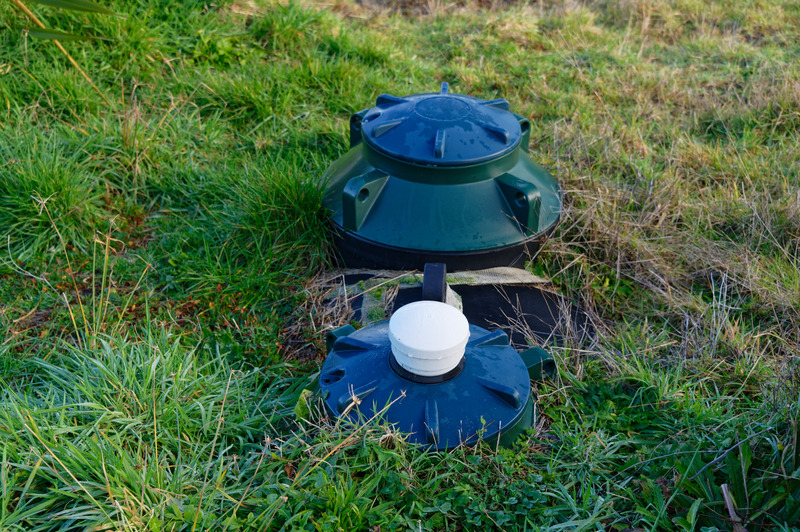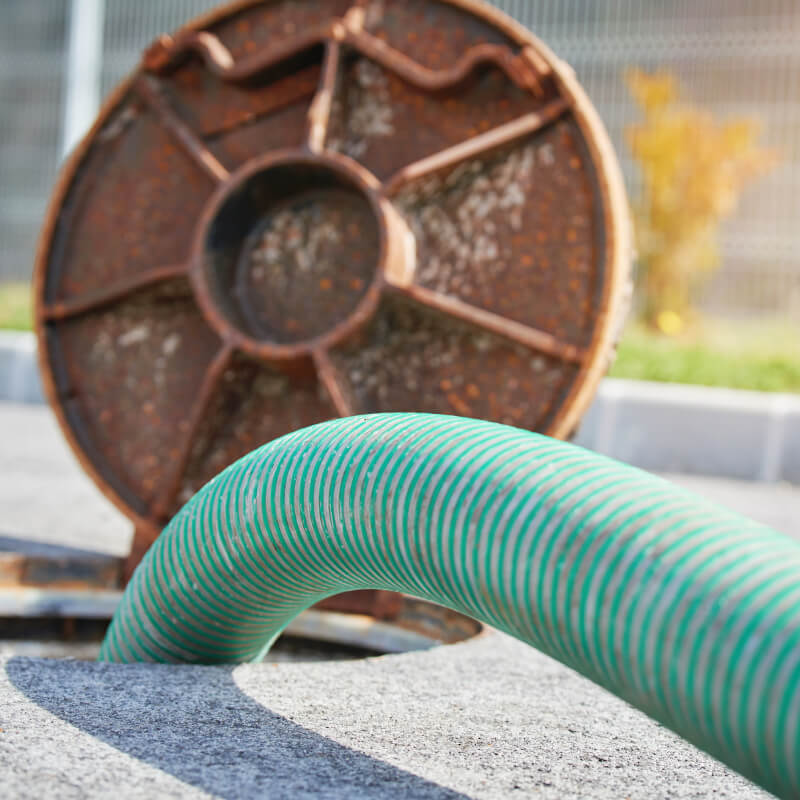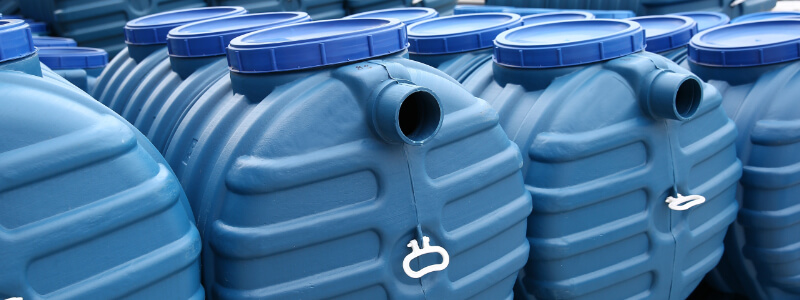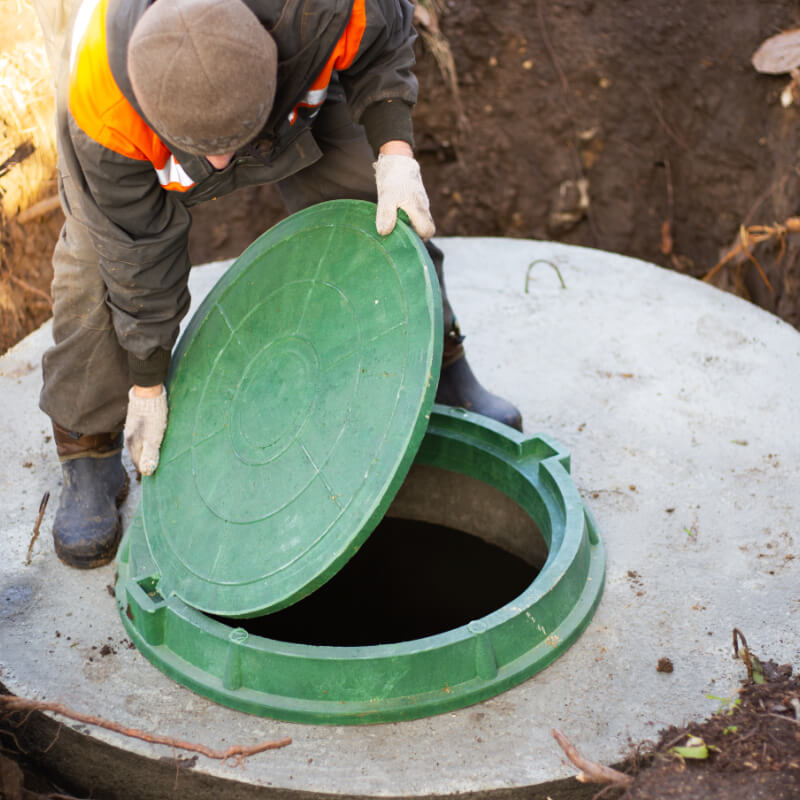In this article
What is a Septic Tank?
As a homeowner, ensuring the smooth operation of your drainage system is crucial for maintaining a clean and safe environment. As you explore drainage solutions, you've likely encountered the term 'septic tank' a cornerstone of effective sewage treatment. But do you truly grasp its significance and inner workings?
Understanding the function and maintenance of septic tanks is vital for ensuring the proper disposal of wastewater and preventing environmental contamination. In this blog, we'll delve into the inner workings of septic tanks, explore their ecological and health implications, and provide essential tips for homeowners to maintain their septic systems effectively.
Whether you're considering a property with a septic tank or have an existing system, this knowledge is indispensable for responsible homeownership. Let's uncover the mysteries behind these underground waste management systems and learn how to care for them effectively.

What is a septic tank?
A septic tank is an underground chamber made of concrete, fibreglass, or plastic through which domestic wastewater (sewage) flows for essential sewage treatment. It is a primary component of on-site sewage management systems and is utilised principally for single residences not connected to municipal sewerage systems.
Different types of septic tanks are available depending on property size, soil conditions, installation costs, and specific regulatory requirements. Shallow dig septic tanks are offered to smaller spaces, whereas a traditional septic tank is offered to larger spaces.
Understanding Septic Tanks
The function of a reliable septic tank is to serve three primary purposes. These are the removal of solids, reduction of the flow rate to allow larger solids to sink, and treatment of wastewater through biological decomposition and drainage.
How do they work?
A drainage septic tank receives wastewater from various sources, such as toilets and drains. Once inside the tank, the liquid waste, known as effluent, fills most of the tank while sludge settles at the bottom.
These sewage tanks act as bioreactors that break down waste into water, with whatever it can't break down sinking to the bottom as sludge or rising to the top as scum. The tank provides a conducive environment for bacteria to break down most solid waste into effluent, which is then piped to the drain field for further treatment.

The Process
A Septic tank consists of a decomposition process. This is where the decomposition of organic matter and the separation of floatable matter and solids from the wastewater occur. Bacteria and other natural processes aid in partially decomposing solids and liquids in the tank. These bacteria, particularly anaerobic ones, thrive in the tank environment and play a crucial role in breaking down waste. Here's a breakdown of how the process of septic tanks works:
- Separation of Waste: When waste solids enter the tank, they sink to the bottom, decomposing into liquids. Meanwhile, the liquids rise to the top of the tank.
- Three Layers: Septic tanks allow waste to separate into three layers: solids, effluent, and scum. The solids settle at the bottom, the effluent exits the tank to the drain field, and the scum floats at the top.
- Effluent Discharge: The liquid wastewater (effluent) exits the tank and is discharged through pipes onto porous surfaces in the drain field. The soil then filters, treats, and disperses the wastewater, ultimately discharging it to groundwater.
- Natural Filtration: As the wastewater percolates through the soil, it removes harmful coliform bacteria, viruses, and nutrients.
The Benefits of a Septic Tank
- Cost Savings: Owning a house with a septic tank can lead to savings by not paying for public sewer services.
- Environmental Friendliness: Septic tanks are environmentally friendly as they do not contaminate the water supply and remove bacteria before releasing water into the soil.
- Natural Filtering Process: Septic tanks eliminate waste using the natural filtering process of the soil, promoting efficient wastewater treatment.
- Economic Benefits: Decentralised wastewater systems, such as septic tanks, help communities reduce extensive infrastructure and energy costs for wastewater collection and treatment.
- Environmental Protection Agency: Septic tanks benefit the environment as they do not contaminate water supplies and promote the removal of impurities.
How Septic Tank Installation Works
When installing a new septic tank, several critical factors should be considered to ensure proper functionality and compliance:
- Soil Type and Percolation: The soil type and percolation rate should be assessed to determine the site's suitability for proper wastewater treatment and drainage.
- Tank Size and Material: Selecting the appropriate tank size and material based on household size, water usage, and environmental conditions is crucial for efficient operation.
- Location and Drain Field Design: The tank's location and the drain field's design should comply with local regulations and ensure proper drainage and environmental protection.
- Environmental Impact: Consideration of the potential environmental impact on surrounding water sources and ecosystems is essential.
Regulations and Permits Required for Installation
Local regulations typically do not require a permit for home owners to acquire for septic tank installation. However, you're expected to stick and adhere to local government recommendations. This is important to comply with to ensure environmental and public health protection - and working with local authorities or a reputable septic system professional can help navigate the permit process should one be required.
Working with Professionals for Installation and Maintenance
Engaging experienced professionals for septic tank installation and maintenance is highly recommended. Qualified professionals can conduct soil tests, design an appropriate system, obtain necessary permits, and ensure compliance with local regulations. Additionally, regular professional maintenance is crucial to prevent issues and maintain the system's longevity and efficiency.
Maintenance and Care
Regular maintenance and inspections are crucial for ensuring septic tank systems' optimal functionality and longevity. Routine inspections can identify potential issues and performance gaps early, allowing for timely maintenance attention and addressing avoidable costly repairs.
Regular maintenance aids in quantifying trends with equipment problems, isolating causes, and preserving the value of investments. These practices involve visual inspections, technical monitoring, and oil analysis to anticipate and address problems proactively.
Tips for maintaining a healthy septic tank system
Maintaining a healthy septic tank system involves several essential tips to ensure its optimal functionality and longevity:
- Inspect and Pump Frequently: Regular inspections and pumping help identify potential issues early and prevent costly repairs.
- Use water efficiently: Conserving water helps prevent system overload and maintain health.
- Properly Dispose of Waste: Ensuring that only human and minimal kitchen and laundry waste are disposed of in the system helps maintain its operational condition.
- Conserve Water: Using less water, such as turning off the faucet while brushing teeth, can protect the septic system from wear and tear.
- Regular Pump-Out: Schedule regular pump-outs to prevent solid waste buildup and maintain the system's health.
Common issues and how to address them
Common issues with septic tank systems may include clogs, backups, foul odours, and soggy drain fields. Here are some ways to address these issues:
- Clogs: Clogs can be addressed using enzyme treatments or adding more bacteria to the system to break down organic matter. Professional pumping and cleaning may also be necessary to clear stubborn clogs.
- Backups: Backups can often be resolved by having the tank pumped and inspecting for any damage or blockages in the pipes. It's important to address backups promptly to prevent further system damage.
- Foul Odours: Foul odours can be a sign of a problem with the septic system. This issue should be addressed by inspecting for leaks, cracks, or other damage to the tank or pipes. Regular maintenance and professional inspections can help identify and resolve foul odour issues.
- Soggy Drain Fields: Soggy drain fields can indicate a failing system. This issue should be addressed by diverting water from the drain field, reducing water usage, and possibly repairing or replacing the drain field if necessary. Professional assessment and maintenance are crucial for addressing soggy drain field issues.
Environmental and Health Considerations
Improperly maintained or failing septic systems can discharge an unsafe amount of contaminants, including bacteria that cause dysentery, into the groundwater, leading to environmental pollution and health risks.
In extreme cases, a failing septic system may leak improperly treated sewage into the environment, potentially spreading diseases such as hepatitis. Septic system failures can release untreated wastewater containing excessive nutrients into the atmosphere, impacting natural resources and public health.
Potential Health Risks
Neglecting regular cleaning and maintenance of septic tanks can lead to surrounding groundwater pollution, posing potential health risks to the public. Malfunctioning septic systems have the potential to release bacteria, viruses, and toxic chemicals into local waterways, further increasing health concerns.
The Importance of Regular Maintenance
To ensure the proper functioning of septic systems for environmental and health benefits, it's crucial to conduct regular inspections, pump-outs, and maintenance to prevent the release of contaminants and pathogens into the environment. Additionally, using water efficiently, properly disposing of waste, and conserving water can help maintain the health of septic tank systems and reduce the potential environmental and health impacts.

Final Thoughts
It's crucial to recognise septic tanks' significant impact on the environment and public health. Poorly maintained septic systems have the potential to contaminate groundwater, leading to environmental pollution, as well as pose health risks due to the release of harmful pathogens and contaminants. When considering the installation of a new septic tank, factors such as soil type, tank size, and drain field design must be carefully evaluated in conjunction with regulatory compliance to ensure proper functionality and environmental protection.
We encourage you to prioritise the proper care and maintenance of your septic tanks. By adhering to regular inspections, pump-outs, and best practices, homeowners can contribute to preserving clean water sources and preventing potential health hazards. Individuals need to recognise their role in maintaining the health of their septic systems and the environment at large.
Cotswold Drainage
If you're in need of assistance in regards to sewage treatment plants, seeking professional guidance is highly advised. Here at Cotswold Drainage, we can help you with any sewage treatment plant enquiries - from drainage field solutions to septic tanks. Contact us today and speak with a member of our team to get booked in your free consultation.
Get in touch
Contact our friendly and professional team via form, phone or email for any drainage issues you may have.
From blocked drains to septic tank repairs and replacements, we're here to help. We have over 25 years of experience and offer 24/7 emergency callouts.
-
01386 882324
-
WhatsApp
-
This email address is being protected from spambots. You need JavaScript enabled to view it. -
See what our customers think






